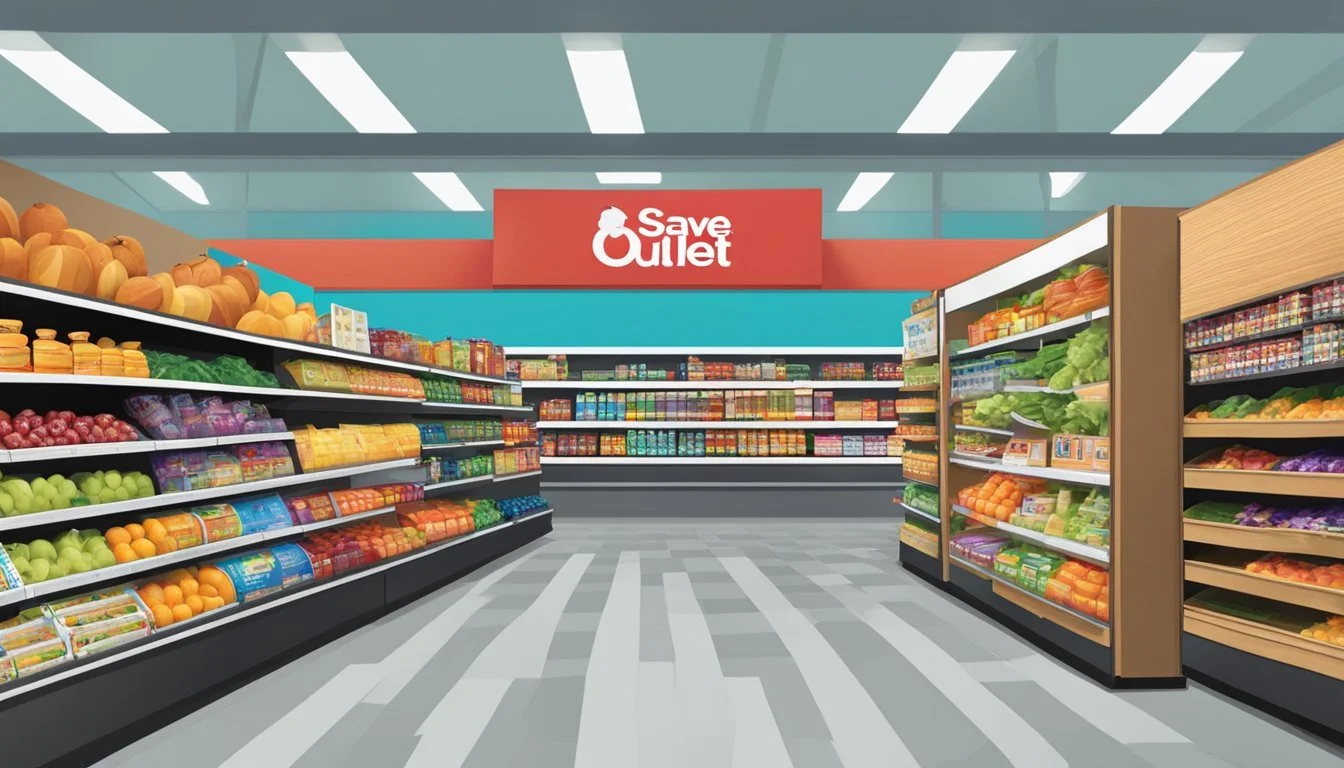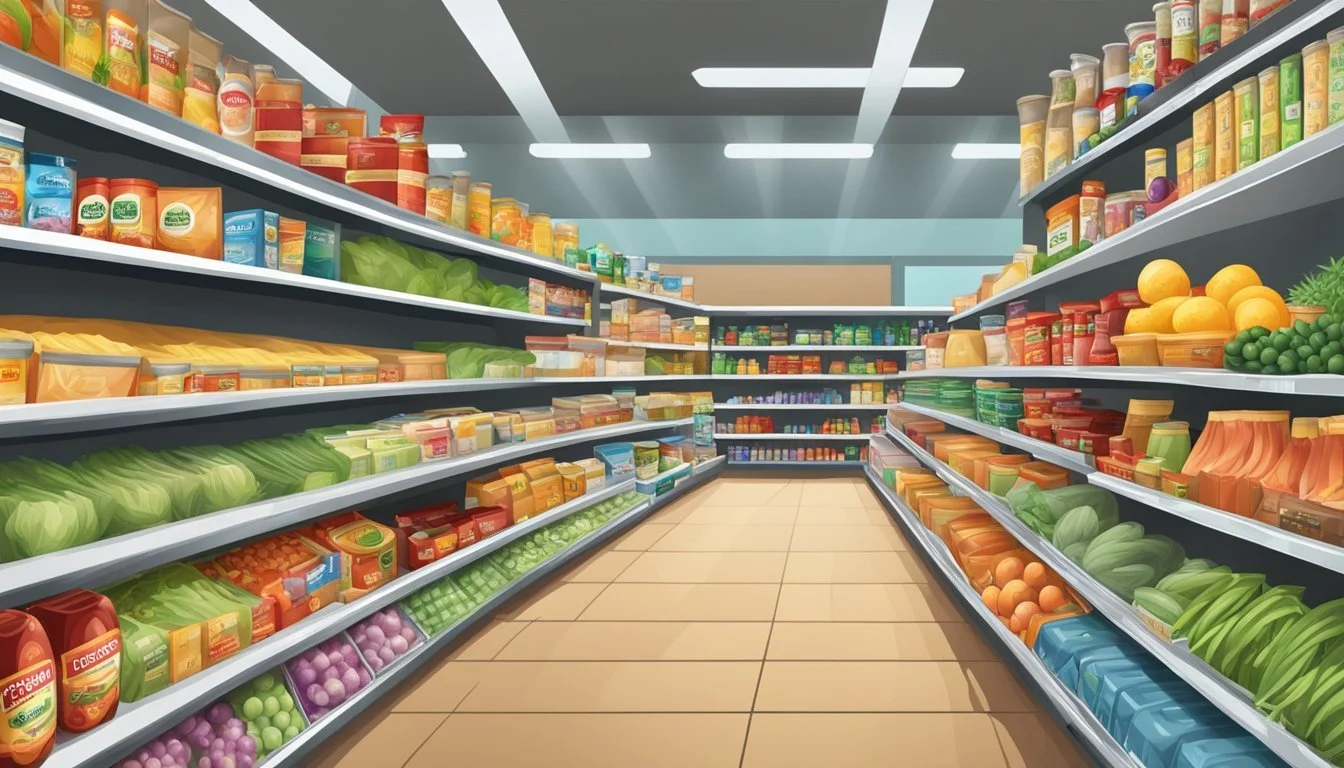Grocery Outlet vs Save Mart
Comparing Prices, Quality, and Selection
Grocery shoppers in search of the best deals often find themselves comparing different stores to stretch their food budgets. Grocery Outlet and Save Mart are two popular options that cater to budget-conscious consumers. Grocery Outlet typically offers lower prices overall, with savings of up to 22% compared to average grocery store prices.
Both chains provide a range of products to meet shoppers' needs, but their business models differ. Grocery Outlet operates as a discount store, selling overstock and closeout items at reduced prices. Save Mart, on the other hand, functions as a more traditional supermarket with a wider selection of brand-name products.
When choosing between Grocery Outlet and Save Mart, shoppers should consider factors beyond just price. Product availability, store locations, and individual shopping preferences all play a role in determining which store offers the best value for each customer.
History and Overview
Grocery Outlet and Save Mart have distinct origins and growth trajectories in the American supermarket landscape. Both companies have expanded from humble beginnings to become significant players in their respective markets.
Origins of Grocery Outlet
Grocery Outlet traces its roots to 1946 when Jim Read opened Cannery Sales in San Francisco. The store initially sold military surplus items at low prices. Over time, it evolved into a deep-discount grocery store.
The company went through several name changes before becoming Grocery Outlet in 1987. In 2009, it adopted the full name Grocery Outlet Bargain Market.
Grocery Outlet's business model focuses on selling overstocked and closeout products from name-brand and private-label suppliers at discounted prices. This approach has allowed the company to carve out a niche in the competitive grocery market.
Growth of Save Mart
Save Mart's history began in California's Central Valley. The company has grown to operate stores under multiple brands, including Save Mart, Lucky, and FoodMaxx.
Save Mart's expansion has focused on northern and central California, as well as northern Nevada. The company's growth strategy has involved both organic expansion and acquisitions of other regional chains.
In recent years, Save Mart has invested in digital initiatives to enhance its competitive position. The appointment of a chief digital officer in 2022 highlights the company's commitment to leveraging data and technology in its operations.
Save Mart is now owned by the Jim Pattison Group, a development that has provided additional resources for the company's continued growth and market presence.
Store Locations and Accessibility
Grocery Outlet and Save Mart have distinct geographic footprints that impact their accessibility for consumers. Each chain focuses on different regions and store formats to serve their target markets.
Grocery Outlet's Geographic Presence
Grocery Outlet operates stores primarily in the western United States. The chain has a strong presence in California, with numerous locations in major cities like San Francisco. Grocery Outlet uses a store locator tool on their website to help customers find nearby outlets.
Their stores are often situated in suburban and urban areas, aiming to provide convenient access for local shoppers. The company has expanded its reach in recent years, opening new locations to serve more communities.
Save Mart Coverage
Save Mart concentrates its operations in northern and central California, as well as northern Nevada. The company operates under multiple brands, including Save Mart, Lucky, and FoodMaxx.
Save Mart's store locator allows customers to search by zip code or city and state. This feature helps area consumers easily find the nearest location. The chain typically positions its supermarkets in neighborhood and community shopping centers.
Save Mart has maintained a focused regional strategy, rather than expanding nationwide. This approach allows the company to tailor its offerings to local preferences and maintain strong connections with the communities it serves.
Pricing and Savings
Grocery Outlet and Save Mart employ different strategies to offer competitive prices and savings to customers. Their approaches impact average prices across various product categories.
Discount Strategies
Grocery Outlet focuses on opportunistic buying, purchasing excess inventory from manufacturers at deep discounts. This allows them to offer significant savings on brand-name products. Their prices can be up to 40-70% lower than traditional supermarkets on many items.
Save Mart, in contrast, uses a mix of everyday low prices and weekly specials. They offer a loyalty program with digital coupons and personalized deals. Save Mart also price-matches competitors' advertised prices on identical items.
Comparison of Average Prices
Grocery Outlet typically has lower average prices across most categories. Studies show their prices are often 20-30% below the average supermarket. A family spending $250 weekly on groceries could save $50-$75 at Grocery Outlet.
Save Mart's prices tend to be closer to average supermarket rates. However, their regular sales and loyalty program can bring costs down significantly. Produce and meat prices at Save Mart are often competitive with discount chains.
Both stores have responded to recent inflation by seeking ways to maintain low prices. Grocery Outlet's flexible inventory model helps them adapt quickly to market changes. Save Mart has expanded their private label offerings to provide more budget-friendly options.
Product Selection and Quality
Grocery Outlet and Save Mart differ significantly in their product offerings and quality standards. These factors play a crucial role in shaping the shopping experience and value proposition for customers.
Assortment of Products
Grocery Outlet specializes in discounted surplus and closeout items. Their inventory changes frequently, offering customers an ever-rotating selection of products. The store carries a mix of name-brand items and lesser-known brands across various categories.
Save Mart, in contrast, maintains a more consistent inventory. They stock a wide range of staples, fresh produce, meats, and prepared foods. Their selection typically includes both national brands and store-brand alternatives.
Grocery Outlet's produce section may be limited, while Save Mart often features a more extensive array of fruits and vegetables. Save Mart also tends to offer a broader selection of organic produce options.
Quality of Goods Offered
Save Mart generally provides a more reliable level of quality across its product range. Their produce, meat, and dairy sections are typically well-maintained with fresh offerings.
Grocery Outlet's quality can be more variable. While they often have high-quality items at discounted prices, some products may be close to their expiration dates or from less familiar brands.
Save Mart usually has stricter quality control measures in place, especially for perishables. Grocery Outlet, due to its business model, may sometimes offer products that didn't meet other retailers' standards but are still safe for consumption.
Both stores can provide good value, but Save Mart tends to offer more consistent quality, particularly in fresh categories. Grocery Outlet's appeal lies in its deep discounts on name-brand products, though quality may vary more widely.
Customer Experience
Grocery Outlet and Save Mart offer distinct shopping experiences for their customers. Their approaches to service and checkout efficiency shape how shoppers perceive each store.
Service Comparison
Grocery Outlet focuses on a no-frills shopping experience. Staff members are generally helpful but limited in number. The store layout emphasizes self-service, allowing shoppers to browse independently. This approach suits customers who prefer minimal interaction and enjoy treasure hunt-style shopping.
Save Mart, on the other hand, provides a more traditional grocery store experience. They typically offer more staff on the floor to assist customers. Employees are often knowledgeable about product locations and can help with specific requests. This level of service is particularly appreciated by families and shoppers who value personalized attention.
Checkout Efficiency
Grocery Outlet's checkout process is straightforward. The stores usually have fewer lanes open, which can lead to longer wait times during peak hours. Self-checkout options are limited or non-existent in many locations. This setup works well for shoppers with smaller baskets but may frustrate those with larger hauls.
Save Mart invests more in checkout efficiency. They offer a mix of staffed lanes and self-checkout options. This variety allows customers to choose their preferred method, potentially reducing wait times. Save Mart's app also includes features to streamline the shopping experience, such as digital coupons and personalized discounts. These tools can speed up the checkout process for tech-savvy shoppers.
Store Brands and Exclusive Products
Both Grocery Outlet and Save Mart offer unique store brand products and exclusive items to attract budget-conscious shoppers. These private label offerings provide value while maintaining quality standards.
Grocery Outlet Exclusives
Grocery Outlet specializes in offering brand-name products at discounted prices through opportunistic buying. Their inventory changes frequently, creating a "treasure hunt" shopping experience.
Grocery Outlet carries exclusive NOSH (Natural, Organic, Specialty, and Healthy) products. These items cater to health-conscious consumers seeking affordable alternatives.
The store's "WOW!" deals feature deeply discounted name-brand items. These limited-time offers can include pantry staples, frozen foods, and household goods.
Grocery Outlet also stocks closeout merchandise and overstock items from major manufacturers. This allows customers to find premium products at significant savings.
Save Mart Specialties
Save Mart offers several private label brands across various product categories. Their "Sunny Select" line covers pantry staples, snacks, and household items at competitive prices.
The "Pacific Coast Selections" brand focuses on fresh produce, meats, and seafood. This line emphasizes locally sourced items when possible.
Save Mart's "Bayview Farms" label provides dairy products and eggs. These items often come from regional suppliers to ensure freshness.
The "Sunnyside Farms" brand covers additional dairy items and frozen foods. This line aims to offer quality alternatives to national brands at lower price points.
Save Mart also carries exclusive regional products, particularly in their California and Nevada locations. These items showcase local flavors and support area producers.
Special Offers and Promotions
Both Grocery Outlet and Save Mart offer enticing deals to attract customers and provide value. Their promotions range from everyday discounts to seasonal specials that cater to various shopping needs and preferences.
Deals and Discounts
Grocery Outlet is known for its deep discounts on a wide range of products. The store often offers up to 40-70% off retail prices on name-brand items. These savings are possible due to their unique business model of purchasing excess inventory and closeouts.
Save Mart, on the other hand, focuses on weekly specials and digital coupons. Customers can find significant savings on fresh produce, meat, and pantry staples. The store's loyalty program provides additional discounts and personalized offers based on shopping habits.
Both chains use loss leaders - heavily discounted popular items - to drive foot traffic. These can include essentials like milk, eggs, or bread at prices below cost.
Seasonal Specials
Grocery Outlet and Save Mart tailor their promotions to match seasonal demands. During holidays like Valentine's Day, both stores offer special deals on chocolates, candies, and roses.
Save Mart typically runs themed promotions aligned with seasons or events. For example, summer barbecue specials or back-to-school savings on lunch box items.
Grocery Outlet's seasonal offerings are more unpredictable due to their opportunistic buying strategy. However, they often secure holiday-themed products at steep discounts, passing those savings to customers.
Both stores capitalize on seasonal produce, offering competitive prices on in-season fruits and vegetables. This approach provides customers with fresh, affordable options throughout the year.
Retailer Comparison with Other Grocery Chains
Grocery Outlet and Save Mart face competition from national retailers and local chains. Their pricing, product selection, and shopping experiences differ from larger chains and discount stores.
Comparison with National Retailers
Walmart often offers lower prices than Grocery Outlet and Save Mart on many items. However, Grocery Outlet's unique discount model can yield better deals on specific products. Save Mart typically has higher prices but provides a wider selection of national brands.
Trader Joe's competes with unique, private-label products at competitive prices. Aldi offers rock-bottom prices on a limited selection, often undercutting both Grocery Outlet and Save Mart.
Whole Foods targets a different market with premium, organic products. Their prices are generally higher than Grocery Outlet and Save Mart.
Local Competition Analysis
Lucky and Safeway compete directly with Save Mart in many markets. These chains often have similar pricing and product ranges, but may differ in store layouts and loyalty programs.
Target has expanded its grocery offerings, competing on convenience and integrating food shopping with other departments. Their prices are generally comparable to Save Mart.
Amazon's online grocery services and Whole Foods ownership have disrupted traditional grocery shopping. Grocery Outlet and Save Mart focus on in-store experiences to differentiate themselves.
Warehouse clubs like Costco offer bulk savings that can beat Grocery Outlet and Save Mart prices for large families or businesses. Discount stores such as Dollar General also compete on price for basic grocery items.
Consumer Demographics and Shopping Preferences
Grocery Outlet and Save Mart cater to distinct customer segments with varying shopping behaviors. Understanding these differences helps explain each store's positioning and appeal.
Target Audience
Grocery Outlet attracts budget-conscious shoppers looking for deep discounts. These consumers often include families, seniors on fixed incomes, and young adults. The store's bargain-hunter appeal crosses income levels, drawing both necessity-driven and deal-seeking customers.
Save Mart aims for a broader demographic. It targets middle-income families and individuals who value a traditional grocery shopping experience. The store appeals to those seeking a wider selection of national brands and fresh produce.
Shopping Behaviors
Grocery Outlet shoppers tend to be flexible with their purchases. They're willing to try new or unfamiliar brands to save money. These customers often make frequent, smaller trips to catch limited-time deals.
Save Mart customers typically follow more predictable shopping patterns. They prefer consistent product availability and often complete larger, weekly shopping trips. These shoppers value convenience and are more likely to stick to familiar brands.
Grocery Outlet's clientele may supplement their purchases with trips to traditional stores. In contrast, Save Mart aims to be a one-stop shop for most grocery needs.
Future Outlook and Industry Trends
Grocery retail is evolving rapidly, driven by changing consumer behaviors and technological advancements. Both Grocery Outlet and Save Mart face opportunities and challenges in adapting to these shifts.
Emerging Grocery Shopping Patterns
Researchers note a growing preference for convenience and value among shoppers. Many consumers now seek hybrid shopping experiences, combining in-store visits with online ordering.
Grocery delivery options have expanded significantly, with major chains partnering with third-party services. This trend is likely to continue, forcing traditional grocers to innovate.
Value-focused retailers like Grocery Outlet may benefit from increased price sensitivity. However, they must also invest in modernizing their operations to meet evolving expectations.
Influence of Technology and E-commerce
E-commerce is reshaping the grocery landscape. Amazon Prime's grocery offerings have set new standards for online shopping and rapid delivery.
Grocery chains are investing heavily in technology to enhance both online and in-store experiences. This includes:
Mobile apps for easy ordering and personalized deals
Self-checkout systems
Advanced inventory management tools
Competition from pure e-commerce players is intensifying. Traditional grocers must leverage their physical locations as assets, potentially serving as micro-fulfillment centers for online orders.
Data analytics are becoming crucial for understanding customer preferences and optimizing operations. Retailers who effectively utilize these insights will likely gain a competitive edge.









